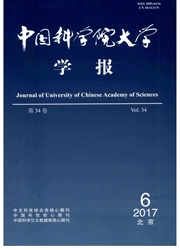

 中文摘要:
中文摘要:
长期高血糖导致糖尿病患者的氧化应激,引起胰岛β细胞氧化损伤,但核转录因子Nrf2(NF-E2-related factor 2)抵抗胰岛β细胞氧化损伤的作用机制还不清楚.本研究用低浓度葡萄糖(LG,5.6 mmol/L)、LG+H2O2和高浓度葡萄糖(HG,27.6 mmol/L)分别处理小鼠胰岛NIT-1β细胞48 h,检测细胞内活性氧(ROS,reactive oxygen species)生成、胰岛素合成与分泌变化和Nrf2入核表达水平.研究发现,高糖诱导NIT-1β细胞的ROS生成,降低细胞合成与分泌胰岛素的水平,但Nrf2入核表达降低胰岛β细胞氧化应激.结果提示Nrf2入核表达可以抵抗高糖诱导的胰岛β细胞氧化损伤,改善细胞合成与分泌胰岛素的功能.
 英文摘要:
英文摘要:
It is well known that hyperglycemia results in oxidative stress in diabetes mellitus, which causes pancreatic β cell dysfunction. However, this cytoprotective effect of Nrf2 on hyperglycemia- induced oxidative stress in pancreatic β cell is not fully understood. In the study, reactive oxygen species (ROS) and insulin synthesis and secretion as well as nucleus NF-E2-related factor 2 (Nrf2) expression in NIT-1β cells were determined after treatment of 48 h with low glucose (LG, 5.5 mmol/L) , high glucose (HG, 27.6 mmol/L) , or LG plus H202, respectively. We found that HG significantly induced ROS generation and decreased insulin synthesis and secretion in NIT-1β cells. However, HG-induced oxidative damage was improved by nucleus NF-E2-related factor 2 (Nrf2) expression. The results suggested that activation of Nrf2 through promotion of nuclear accumulation plays an important role in protection against hyperglycemia-indueed oxidative injury.
 同期刊论文项目
同期刊论文项目
 同项目期刊论文
同项目期刊论文
 期刊信息
期刊信息
